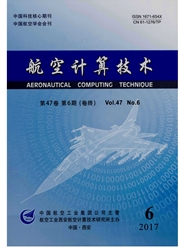

 中文摘要:
中文摘要:
自由飞行下,飞行员可以灵活地选择飞行路线,从而提升了空域的利用率,是解决航路拥挤问题的一种有效方式。为保证自由飞行下的飞行安全,需要对自由飞行下的最小安全间距进行研究,从而为安全间距标准的制定提供理论依据。考虑CNS(通信、导航、监视)性能引起的飞机定位误差和飞机速度误差,以及它们导致飞机间距的误差,建立了基于二维随机变量概率密度的碰撞风险模型。针对所建立的碰撞风险模型,提出了采用最优8阶Steffensen迭代法对最小安全间距进行求解的方法,从而求出自由飞行下基于CNS性能的最小安全间距。算例结果验证了求最小安全间距方法的可行性。
 英文摘要:
英文摘要:
During free flight,pilots can choose the flight trajectory flexibly,improving the utilization of airspace,therefore free flight is a effective way to solve the crowed air traffic.In order to ensure the security of the free flight,it is essential to make research on minimum safety distance in free flight so that it could provide a theoretical basis for the standard of safety distance.Firstly,considering the influence which CNS ( Communication,Navigation,Surveillance) performances and speed error make on the free flight , and the position error of aircraft caused by it,a collision risk model based on probability density of two dimensions random variable is established.Then according to the established collision risk model,the author put the view that the minimum safety distance can be calculated by the optimal eighth-order Steffensen iterative method.Thus the minimum safety distance in free flight based on CNS performance is calculated.Results of the examples indicate the feasibility of the method used by this paper to calculate the minimum safety distance of free flight.
 同期刊论文项目
同期刊论文项目
 同项目期刊论文
同项目期刊论文
 期刊信息
期刊信息
